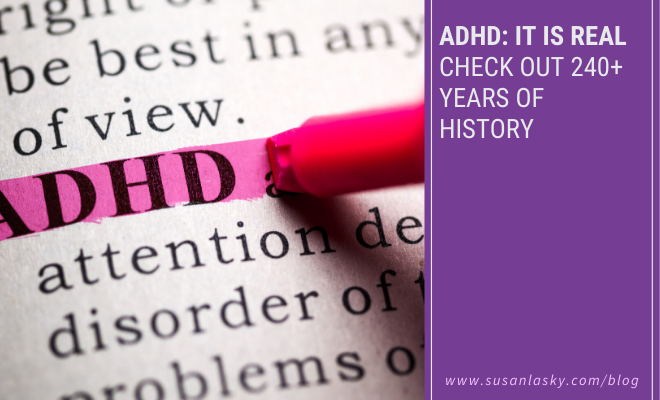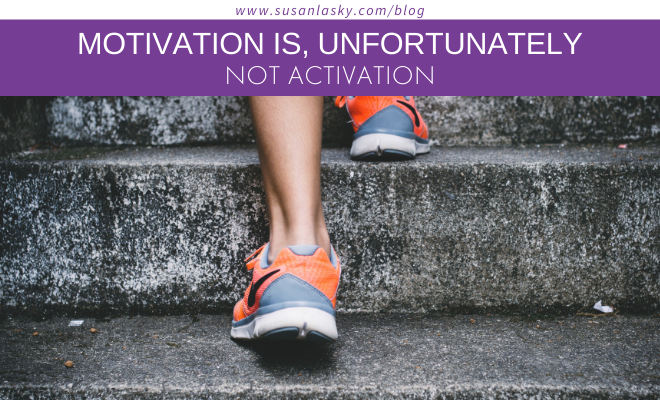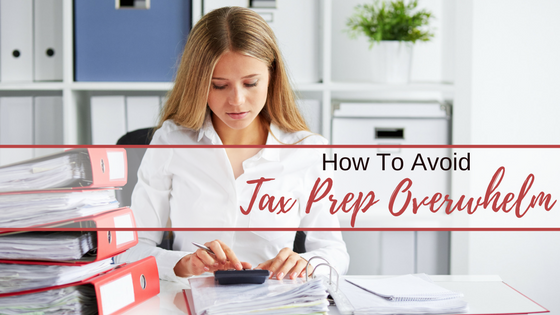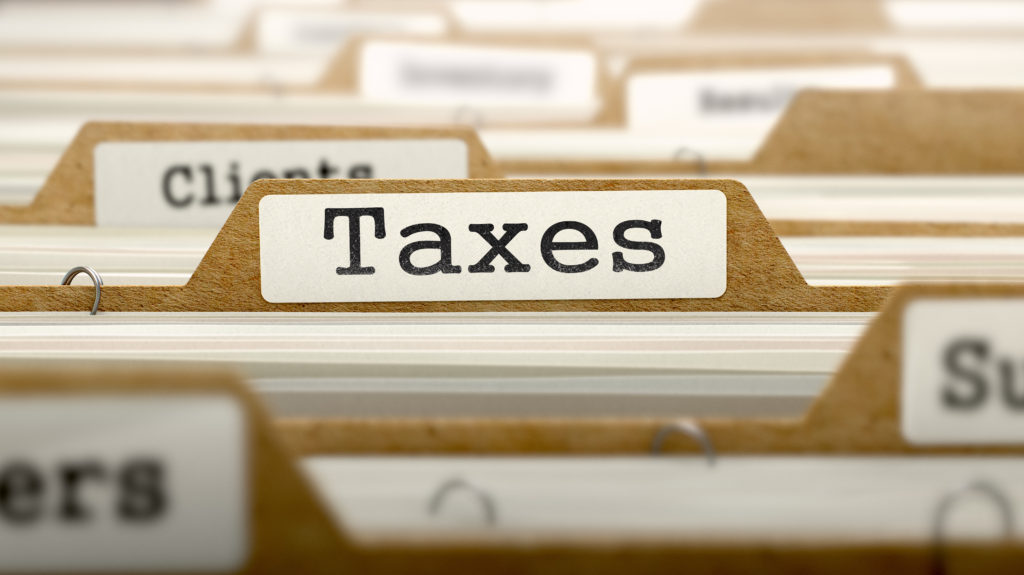
I Don’t Wanna!
But I Don’t Feel Like it! …
I was all set to write my next blog post. Great Idea. Gives me joy to share information and helps me to stay in business so I can keep helping clients. I had the time blocked on my calendar for today… but I don’t feel like it!
The funny/sad thing about “…But I don’t feel like it” – those six short words wield a mighty power, and it’s not for good. We think them frequently, or at least many of us do, yet they are the Destroyers of Productivity (and they don’t do much for self-esteem).
Today the conversation was about writing a blog, but it is a frequent flyer in my head. Here are some typical triggers that lead to this common refrain — I imagine they sound familiar to many of you.
- I ought to go to the gym…
- I should re-organize my closet…
- I need to finish this…
- I said I would…
- It’s at the top of my ‘Action’ list…
…BUT I DON’T FEEL LIKE IT!
Just six words, but powerful enough to subvert our best intentions. The enemy of getting things done.
What to do?
I coach my clients on the benefits of reframing a ‘should… must… need to… or have to…’ into a ‘want to.’ Why? Because we’re all more inclined to do what we want. But even wanting to do something can lose traction when the ‘but I don’t feel like it’ button is pressed, and it gets pressed very easily – “I’m tired… I have too much to do…. I’m not sure how to… It’s too much work… I just don’t wanna!”
These are powerful feelings. Strong enough to triumph over our already-compromised executive functioning capabilities. So, too often, we don’t take action and our temporary emotions/avoidance tendencies get top billing.
I don’t like giving in. Sometimes, sure. Being self-indulgent can be comforting, and there are times when eating an ice cream sundae or taking a nap should take precedence over staying on a diet or doing the laundry. But other times it feels like the nefarious power of ‘I don’t wanna’ is in charge, and even my best plans are unwilling hostages. So, here’s how to fight back.
- Start from your reality. Step #1 of my 7-Step PowerPlan to Success™ (download for free from https://susanlasky.com) is Self-Awareness, which means acknowledging how you really feel. If you don’t feel like it, why deny the obvious? Step #2 is Self-Acceptance. You already know all those shoulds, oughts, musts, etc., and instead of fighting the way you feel or blaming yourself, accept your mood, so you’re not adding incendiary guilt to the challenge of taking action (…or not). Avoid the trap of SCDD – Self-Compassion Deficit Disorder!
- Remind yourself that you have the power of choice. Step #3 is to Believe in Possibility – that we always have a choice. It’s easy to forget this when caught up in the moment. Still, despite the way you feel (or think), you can find strategies to do things differently, thus producing different results.
- You can take action despite your thoughts and feelings. There is a powerful concept in psychology, including Morita Therapy, the Japanese psychology of Action, that focuses on our ability to take action regardless of the thoughts and feelings that will always get in the way. The trick is to acknowledge them, including the powerful “I don’t feel like it,’ then choose to ignore them… they don’t have to be in control, even though they seem to be. Start small. If you are reluctant to go to the gym, put on your sneakers and have everything you need in a bag by the door. I’ve had clients report back that wearing sneakers ‘magically’ helped them start moving. Worth trying!
- Keep that action simple and immediate. If I think about writing a blog, it can be overwhelming. Overwhelm, especially for people with challenged executive functions or ADHD, causes stress. Our brain perceives this stress as danger, triggering the ‘fight, flight or freeze’ response. While designed to protect us, once released, we’re even less likely to get anything accomplished. So, recognizing I’ve shifted into avoidance mode, my next move isn’t to force things but to do something that will minimize stress and help me get to work. Maybe I’ll just write a few buzz words (Iike I did when I started this blog by writing, “But I don’t feel like it…”). Maybe I’ll get inspired and continue, or perhaps I won’t, but I’ve done something!
- Consider what is actually getting in the way. This may be a waste of time (we don’t know what we don’t know!), but occasionally there’s increased clarity that enables moving forward when you explore why “I don’t wanna.” The kneejerk response “But I don’t feel like it” may be a reaction to a concern that, when acknowledged, can be remedied. Perhaps your reluctance to do something might be because you aren’t sure how to get it done. Maybe you first need to do some research or create a Project sheet and break it down into small, do-able tasks. Maybe you need to ask for help. Or maybe you just have too many things to do and haven’t prioritized. Remember, The Two Magic Words for Productivity: Clarity and Priority. (This is the title of another blog post on my website.)
- Look for the options. Sometimes, exploring what is really getting in the way gives options that boost action.
- You might be reluctant to even begin straightening up your office because you think it will take most of the day. OK, how can you power up that action switch? Start by setting an alarm, then put on dance music and work for just 50 minutes. Who knows, you may even complete the job in that time, or at least make good progress.
- Or maybe you don’t want to organize your very messy clothes closet. When you explore the ‘why’ it becomes clear that part of your avoidance is frustration due to a lack of space. So, the project shifts to reviewing your clothing with an eye towards donating. As organizing guru Barbara Hemphill says, “You can’t organize clutter.” First, declutter, then you’ll find it easier to organize.
- You might be reluctant to even begin straightening up your office because you think it will take most of the day. OK, how can you power up that action switch? Start by setting an alarm, then put on dance music and work for just 50 minutes. Who knows, you may even complete the job in that time, or at least make good progress.
- Look for the motivators. What will encourage activation?
- It is easier to spend time working on your closet if you have a friend hanging out offering encouragement (external motivation and redirection toward the goal).
- It also helps to understand that people with ADHD are rarely driven by the common motivators of importance, consequences or rewards (unless they are immediate). But if something is interesting or novel, we’re more likely to WANT to pursue it. I know it’s easier for me to unload the dishwasher (boring and repetitive) if I make it a game to get it done quickly: Beat the TV Commercial. I recently discussed this concept with a client, and she decided the best way to clean her kitchen after dinner is to make having her favorite dessert dependent upon having a cleared counter and sink. The yummy dessert (an immediate reward) was enough of a motivator to make her want to do it.
- It is easier to spend time working on your closet if you have a friend hanging out offering encouragement (external motivation and redirection toward the goal).
So, how did I manage to write this blog, despite my immediate reaction of “But I don’t feel like it!”?
- I started by acknowledging my reluctance, making a bargain with myself that I’d put in the effort for just 30 minutes. (Usually, once I begin, I easily keep going, but it takes a lot to turn on the ignition to activate my engine.)
- I decided to switch my environment (a very helpful strategy). Many of my clients find they are more productive if they work in a coffee shop, library, or co-working space – even changing rooms can help. I chose to sit outside and enjoy a gorgeous day (studies show that being in nature has a way of resetting/ recharging the brain, so there’s another boost). Note: This blog was originally published during warm weather, pre-pandemic.
- My small, portable bluetooth speaker played perfect background music at low volume from my playlist (for me, wearing earbuds or earphones would have made the music my primary brain focus and been distracting, rather than enhancing).
- I filled a thermos cup with a tasty drink (self-care). No, it wasn’t wine – not a bad idea, but I was tired and would have drifted off target.
- I took along my favorite pen and a pad with smooth, thick conducive-to-writing paper (sometimes writing by hand is more inspirational than keyboarding).
- I set a clear intention and decided to put everything else on hold while I wrote. While I had my phone with me, I turned off alerts and kept it out of sight to avoid temptation. (Although yes, I still checked it periodically, sigh…)
- I then began by writing those six powerful words, “…But I don’t feel like it.”
There are many ways to overcome these Six Powerful Words. Let’s continue this conversation with your comments on my blog, www.SusanLasky/i-dont-wanna. What are some ideas that work for you?




















